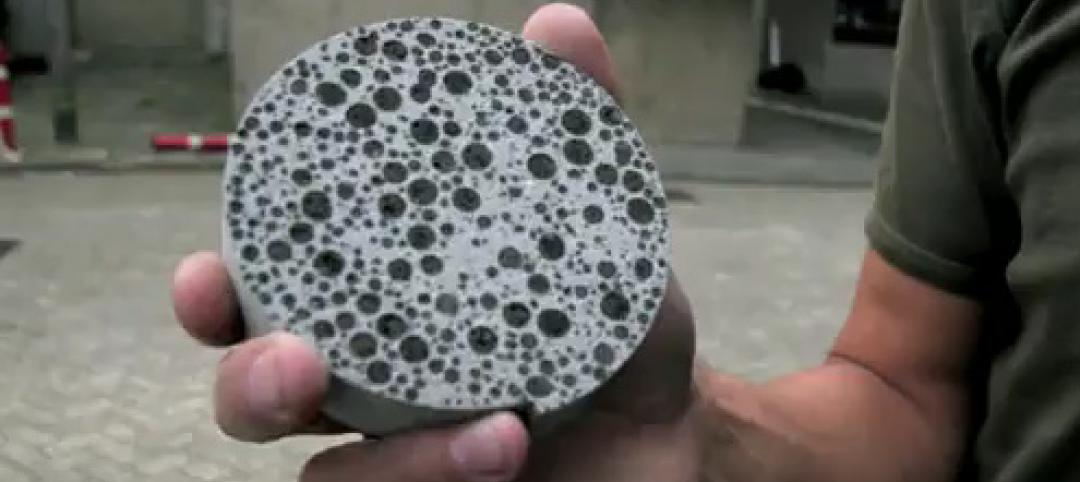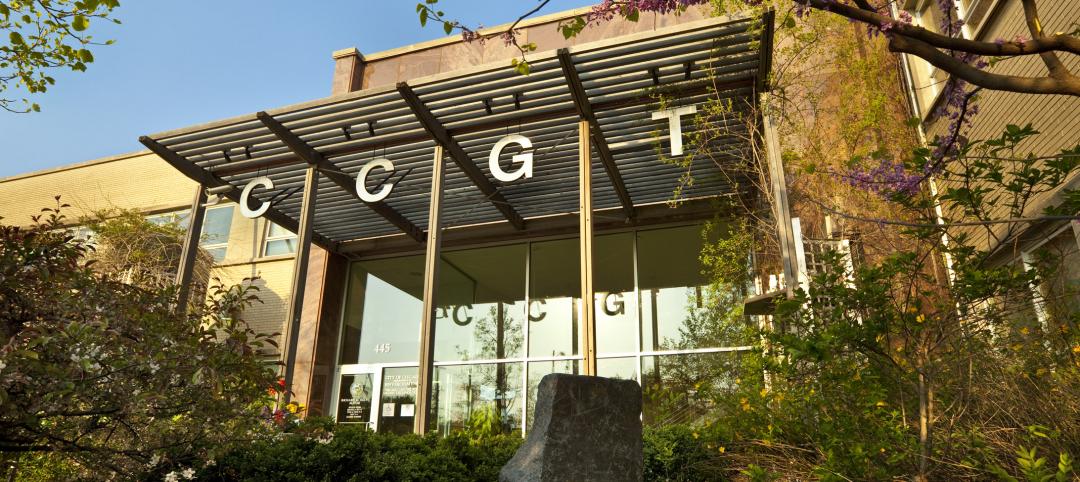MINNEAPOLIS - March 23, 2010 - VAST Enterprises, LLC announced that it won the "Design for Sustainability" Award from the Plastics Environmental Division of the Society of Plastics Engineers. VAST received the honor as part of the 2010 Environmental Stewardship Awards competition. The awards were presented at the Global Plastics Environmental Conference (GPEC) 2010, "Sustainability & Recycling: Raising the Bar in Today's Economy," which took place on March 8-10, 2010 in Orlando, Fla.
"The Design for Sustainability Award recognizes innovative contributions to the betterment of the environment resulting from unique engineering or chemical design with plastics," said P.M. Subramanian, PhD, president, SPM Technologies and GPEC awards chairman. "VAST won because its composite masonry technology addresses a major problem with the disposal of used tires and achieves significant reductions in total energy consumption and carbon footprint compared with traditional, incumbent paver products."
Composite masonry, a new category of green building material, is VAST's patented composite consisting of up to 95 percent recycled automobile tires and plastic containers. "The VAST manufacturing process consumes 82 percent less energy and releases 89 percent less carbon dioxide than concrete product manufacture," said Andy Vander Woude, LEED AP, chief executive officer, VAST Enterprises, LLC. "Our products are cradle-to-cradle green and 100 percent recyclable."
VAST composite masonry products - including landscape pavers, permeable pavers for stormwater management, deck pavers and thin brick - offer an engineered alternative to molded concrete and clay brick. VAST Composite Pavers meet the most demanding requirements for beauty, design versatility, durability, sustainability, and installation efficiency. VAST's composite material imparts rich colors, superior slip resistance and unbeatable strength at one-third the weight of concrete pavers.
The Design for Sustainability Award is the most recent honor for VAST, which recently introduced a new 4x8-inch version of its Composite Landscape Paver. In 2009, VAST won two Tekne Awards, the Cleantech Award and the Innovative Collaboration of the Year Award, from the Minnesota High Tech Association. VAST Composite Pavers were honored with an EcoHome Editors' Choice Award as one of the Top 10 Green Building Products for 2009. And VAST was also selected as the Best Green Exterior Product in the 2009 Environmental Design + Construction Readers' Choice Awards.
About SPE
The Society of Plastics Engineers (SPE) is the premier source of peer-reviewed technical information for plastics professionals. Founded in 1942, SPE takes action every day to help companies in the plastics industry succeed by spreading knowledge, strengthening skills, and promoting plastics. Employing these vital strategies, SPE has helped the plastics industry thrive for over 60 years. SPE has become the recognized medium of communication among scientists, engineers, and technical personnel engaged in the development, conversion, and application of plastics. For more information, please visit www.4spe.org or www.sperecycling.org.
VAST Enterprises, LLC
VAST applies its patented technology to transform recycled materials into a new resource for green building: composite masonry. VAST composite products - including landscape pavers, permeable pavers for stormwater management, deck pavers and thin brick - offer an engineered alternative to molded concrete and clay brick. VAST meets the most demanding requirements for aesthetics, durability, sustainability and installation efficiency. Award-winning VAST pavers deliver rich colors, superior slip resistance and unbeatable strength at one-third the weight of concrete pavers. VAST can contribute to qualification for more LEED credits than any other paver. Today, every 5,000-square foot VAST landscape installation keeps 2,500 scrap automobile tires and 75,000 plastic containers out of U.S. landfills. www.vastpavers.com
Related Stories
| Feb 22, 2013
Dutch team's 'bioconcrete' can heal itself
Two researchers from Delft Technical University in Holland have developed a self-healing cement that can stop microcracks from forming in concrete.
| Oct 9, 2012
Celebrating brick in architecture
The Brick Industry Association’s 2012 Brick in Architecture Awards put the spotlight on new projects that make creative use of one of humankind’s oldest and most beloved building materials.
| Jun 29, 2012
SOM writes a new chapter at Cincinnati’s The Christ Hospital
The 332,000–sf design draws on the predominantly red brick character of The Christ Hospital’s existing buildings, interpreting it in a fresh and contemporary manner that fits well within the historic Mt. Auburn neighborhood while reflecting the institution’s dedication to experience, efficiency, flexibility, innovation and brand.
| Jun 25, 2012
AIA-NJ honors DMR Architects
The academic building, completed in 2009, provides classrooms, computer labs, faculty offices, and meeting spaces for the College, which has a steady 7% annual increase in enrollment.
| Jun 8, 2012
Nauset Construction completing sustainable dorm for Brooks School
Student input on green elements provides learning experience.
| Jun 4, 2012
Brownfield goes green
Chicago Center for Green Technology uses high-speed, energy-efficient hand dryers to share its green message and earn LEED credits.
| Jun 1, 2012
New BD+C University Course on Insulated Metal Panels available
By completing this course, you earn 1.0 HSW/SD AIA Learning Units.
| Jun 1, 2012
AIA 2030 Commitment Program reports new results
The full report contains participating firm demographics, energy reduction initiatives undertaken by firms, anecdotal accounts, and lessons learned.
| Jun 1, 2012
K-State Olathe Innovation Campus receives LEED Silver
Aspects of the design included a curtain wall and punched openings allowing natural light deep into the building, regional materials were used, which minimized the need for heavy hauling, and much of the final material included pre and post-consumer recycled content.














